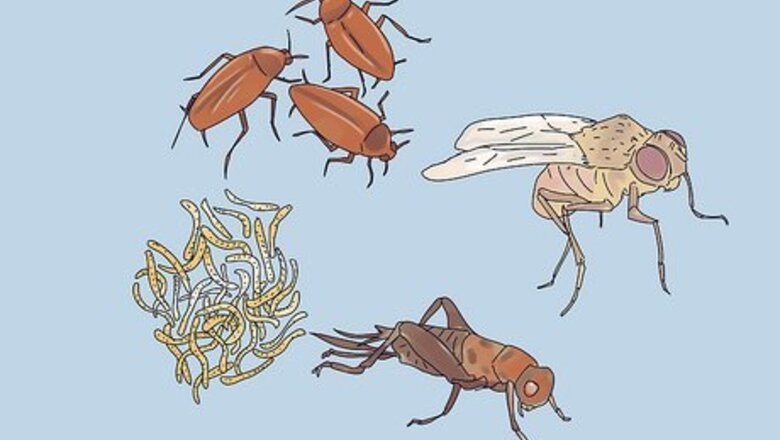
views
X
Research source
Green anoles are fascinating animals and having one as a pet can be very rewarding. It is important to be informed and prepared when feeding your anole to ensure that your green friend will live a long and healthy life.
Getting Supplies
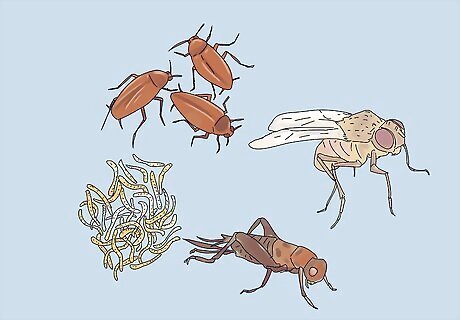
Buy live prey. Anoles are insectivores, and crickets and other insects make up a large portion of an anole’s diet. Crickets are the most common meal for an anole, but it is important to provide a variety of live prey, including small mealworms, small roaches, fruit files, and other small insects to ensure that your green friend has a well-rounded diet. Visit your local pet store or order online to stock your anole’s food pantry. Wild-caught, pesticide-free insects can be fed to your anole as well. Avoid feeding your anole superworms or king worms. The mandibles in these worms can cause injury to an anole.
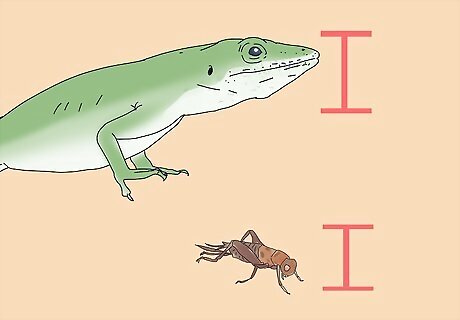
Size up the prey. Be sure that the insects are no larger than the anole’s head so they are easy for the anole to catch and digest.
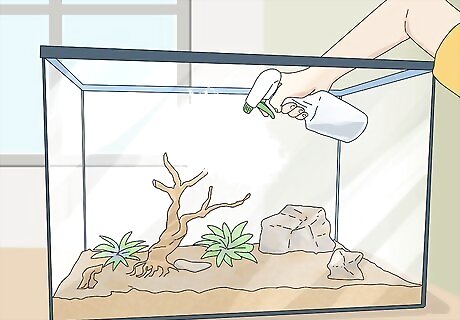
Provide water. Using a spray bottle, mist the inside walls and the plants in the anole’s terrarium. Anoles often lap up dew on plant leaves. Some will lap up water in a shallow dish. If you place a water dish in the enclosure, be sure that it is shallow dish and that a plant stem or branch is placed in the water so the anole can escape from the dish if need be.
Preparing an Anole’s Meal

Build a cricket sanctuary. Crickets are the most common lizard meal. Since anoles eat live prey, it is necessary to care for the crickets and provide them with a healthy habitat. House the crickets in a plastic, well-ventilated container and place an empty egg crate or paper towel rolls in the container so that the crickets do not smother one other. Keep the cricket container in a dry place and be sure that it is in darkness for at least 8 hours per day. Place eggs crates or paper towel rolls vertically in the enclosure so that the crickets have tall structures to climb. Remove dead crickets as soon as possible. Crickets will, at times, eat the dead, which can lead to disease.

Gut-load live prey. You are what you eat, and the same is true for anoles! Gut-loading describes the process of feeding your crickets and other live prey foods rich in protein, vitamins, and other nutrients so your pet will reap the benefits. Dry foods such as oats, mixed seeds and nuts, wheat bran, alfalfa, and fish food are great staples for a cricket’s diet. Be sure to provide chopped fresh greens and finely chopped potatoes and carrots to ensure a healthy cricket diet. Apples and oranges are great for hydration. Place a few chopped pieces of these fruits to avoid dehydration and cricket cannibalism.
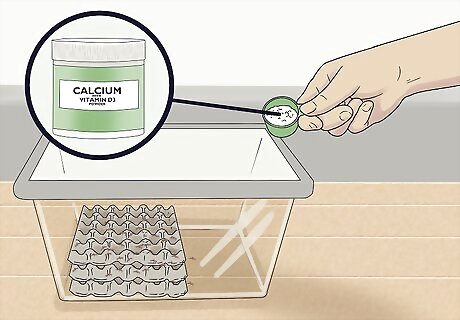
Dust the prey. To guarantee that the anoles are getting the proper nutrients, dust live prey with a supplement powder that contains calcium and vitamin D3. This will help prevent metabolic bone disease, which is a serious bone degradation disease. Like gut-loading, dusting the prey with these extra supplements will benefit your anole’s overall health.
Feeding an Anole
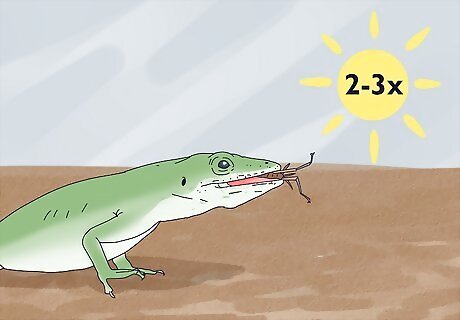
Feed an anole daily or every other day. Young anoles should be given 2-3 food items each day. Adult anoles should be given 2-3 food items every other day.
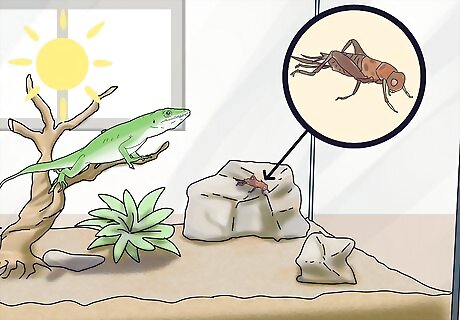
Serve meals during the day. Anoles are diurnal, which means they are most active during the daytime. This is the ideal time for them to hunt their prey effectively and get some exercise.
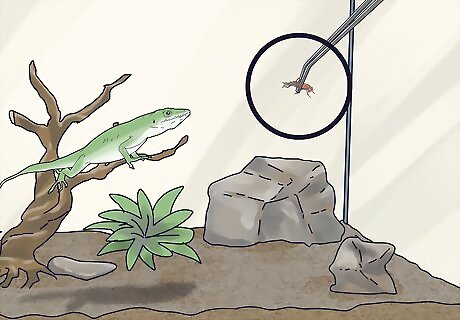
Set the crickets loose. When feeding your anole, place the prey in the anole’s enclosure by gently dropping them from a food cup or by gently releasing the prey individually with feeder forceps onto the branches and leaves of the enclosure's vegetation.
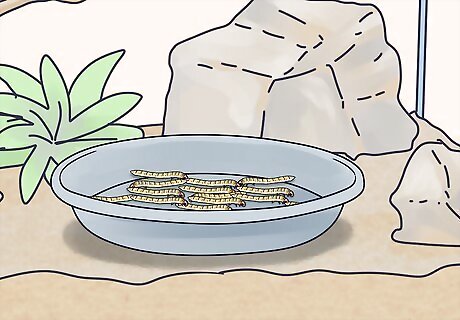
Place worms in shallow saucers. When feeding worms to your anole, it is important to put them in a shallow dish so the anole can reach the prey. This also prevents the prey from escaping.
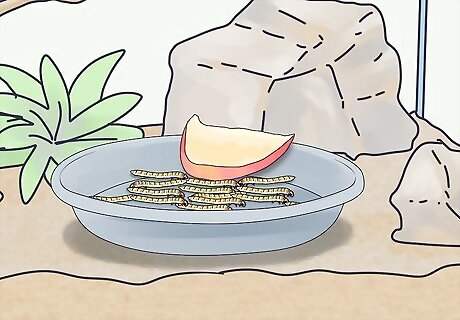
Keep an eye on the prey. If the anole does not eat the prey right away, place some food for the prey in the enclosure. Without food of their own, the prey may try to eat the only thing it can find—your anole!











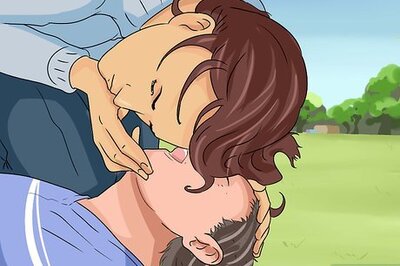








Comments
0 comment